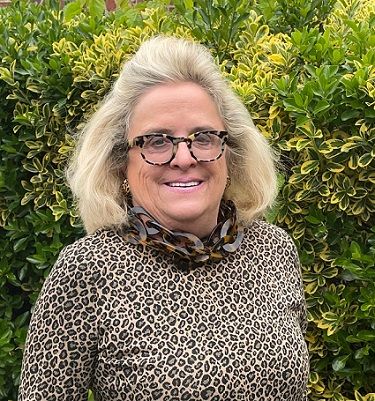From the Mayor: Decisions in Albany Affect Bronxville

Photo by N. Bower
By Mary Marvin, Mayor of Bronxville
Dec. 6, 2023: In addition to carrying out our duties on the local government level, the Trustees and I have to be constantly aware of what is going on in Albany as the effect on the Village, both financially and operationally, of pending legislation can be profound.
We must be not only vigilant, but proactive and make sure our voice is heard even though there are only 6,500 of us. Such was the case with Governor Hochul’s proposed “Housing Pact” in the last legislative session which, if passed, could have added 10,000 housing units to our Village, which currently has 2,650 homes.
As Mark Twain humorously said, “When Congress is in session no American is safe.”
We must never lose sight of what is going on in Albany, especially since legislation can be passed quite expeditiously since all three houses of government currently are of the same party.
To that end, partnering with my fellow state mayors, who are involved in the New York State Conference of Mayors (NYCOM), the following are front burner issues that we know will be discussed in the next legislative session and depending on the disposition, will have significant effects on Village taxes and operations.
As you know, being residents of New York, the amount of tax dollars we send to Albany is staggering. To make New York affordable, it is vital that the reinvestment of at least some of this state tax revenue go back to municipal governments. This is essential to the strength of our communities and the retention and growth of New York State’s declining population base.
Unfortunately, in the last 14 budgets, New York State has failed to increase the essential reinvestment of tax dollars back to the respective communities. This neglect has led to raising municipal tax burdens and harmful disinvestment in local essential services and staffing.
By contrast, over the same period, school aid has increased by more than $6 billion, well exceeding the rate of inflation. Not refuting that school districts are deserving of increased funding, municipal governments should be treated even remotely fairly as our services are essential to the safety and quality of life of everyone in a community.
Even just a cost of living adjustment to the current $750 million, that is spread across every community in the state, the program would require an additional $270 million infusion or a 38% jump just to meet the COLA.
As so many of you know all too well, communities need a funding program for water and sewer maintenance and repair.
There has been a significant redirecting of funding to address water infrastructure issues in recent state budgets. However, the program was flawed from its inception as the funding is not readily available for upgrades or preventive maintenance. Rather applicants need to demonstrate an emergency situation and not simply the need to prevent an emergency. This is completely counterintuitive as money now flows to communities who neglected their sewer systems, resulting in catastrophic problems and are then rewarded with state funding. My fellow mayors and I support establishing an annual funding stream that could be used by all cities and villages for preventive maintenance as well as undertaking capital projects necessary for the safe and effective operation of our systems, especially in light of the incredible frequency of storms and intensity of rainfall we have received in the last half decade. It just makes sense to reward people who have already tried to be proactive.
Probably one of my least favorite initiatives begun under the leadership of Governor Cuomo was the 2% tax cap. It served to be a brilliant campaign slogan bumper sticker as it seemed to imply that it would stop communities from adding two percent more of “fat” spending every year. In fact, it did not account for the fact that state mandated programs, including unfunded mandates, as well as pension obligations, health care and workers compensation contributions traditionally all rise well above 2% annually.
Unlike school districts and the state itself, which are exempt from the tax cap if they are undertaking infrastructure or capital programs, municipal governments are not exempt, resulting in a powerful disincentive to make needed infrastructure repairs in municipalities that are 100+ years old. Municipalities need to be included in this exemption.
An issue that is 100% supported by local mayors is reform of the Civil Service Law which in New York, always carries the adjective “arcane” in front of it.
We at the municipal level are always looking for innovative ways to effectively manage our workforce, but unfortunately the current civil service laws truly hinder flexibility in hiring.
As example, there is something called the rule of three that is most egregious. To give you a scenario, men or women interested in becoming a police officer have to take a written exam which is only given periodically and not on a standardized schedule.
The top three scorers must then be employed before you can go down the list to even touch numbers 4 to 100. All that matters is their score on the written test period.
Communities may be looking for an officer that has fluency in several languages, or has the personality, in our case in particular, for local policing, foot patrol and interaction with the residents, not just a good test taker.
None of the above qualities can be evaluated until you can get to candidate four.
As happens in police departments, there are occasions when people take early retirement and/or are injured on the job to the point where they cannot continue working.
If the first three people from the last test have not been hired, you have to leave that slot vacant in your department for however many months it takes for those folks to be hired or to remove their names from the list.
The resulting work force shortages can limit the amount of extra police patrols, bike officers, walking officers, etc. that a community can have, truly affecting the quality of life.
We are petitioning our legislators for more local control to allow communities to address their particular needs.
The above issues are just a snapshot of what we will be advocating for in the coming months. Based on the number of potential issues/changes under discussion in Albany, this topic will probably require a second column.
Be assured that your Trustees do not operate in a vacuum as we are very cognizant of the trickledown effect of decisions made in Albany.
Government & History Directory
Bronxville is a quaint village (one square mile) located just 16 miles north of midtown Manhattan (roughly 30 minutes on the train) and has a population of approximately 6,500. It is known as a premier community with an excellent public school (K-12) and easy access to Manhattan. Bronxville offers many amenities including an attractive business district, a hospital (Lawrence Hospital), public paddle and tennis courts, fine dining at local restaurants, two private country clubs and a community library.
While the earliest settlers of Bronxville date back to the first half of the 18th century, the history of the modern suburb of Bronxville began in 1890 when William Van Duzer Lawrence purchased a farm and commissioned the architect, William A. Bates, to design a planned community of houses for well-known artists and professionals that became a thriving art colony. This community, now called Lawrence Park, is listed on the National register of Historic Places and many of the homes still have artists’ studios. A neighborhood association within Lawrence Park called “The Hilltop Association” keeps this heritage alive with art shows and other events for neighbors.
Bronxville offers many charming neighborhoods as well as a variety of living options for residents including single family homes, town houses, cooperatives and condominiums. One of the chief benefits of living in “the village” is that your children can attend the Bronxville School.
The Bronxville postal zone (10708, known as “Bronxville PO”) includes the village of Bronxville as well as the Chester Heights section of Eastchester, parts of Tuckahoe and the Lawrence Park West, Cedar Knolls, Armour Villa and Longvale sections of Yonkers. Many of these areas have their own distinct character. For instance, the Armour Villa section has many historic homes and even has its own newsletter called “The Villa Voice” which reports on neighborhood news.
Link to Village of Bronxville One Square Mile Monthly Newsletter
Village of Bronxville Administrative Offices
337-6500
Open 9:00am - 4pm excluding holidays and weekends
Bronxville Police Department
337-0500
Open 24 hours
Bronxville Parking Violations
337-2024
Open 9:00am - 4pm excluding holidays and weekends
Bronxville Fire Deparment
793-6400















